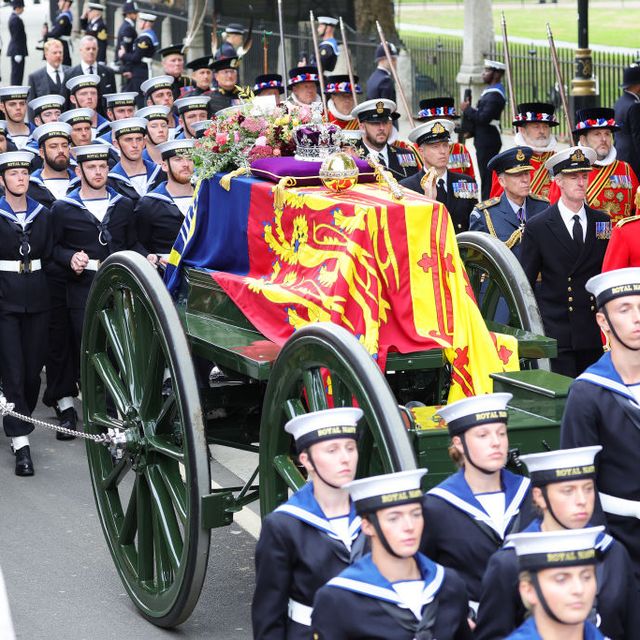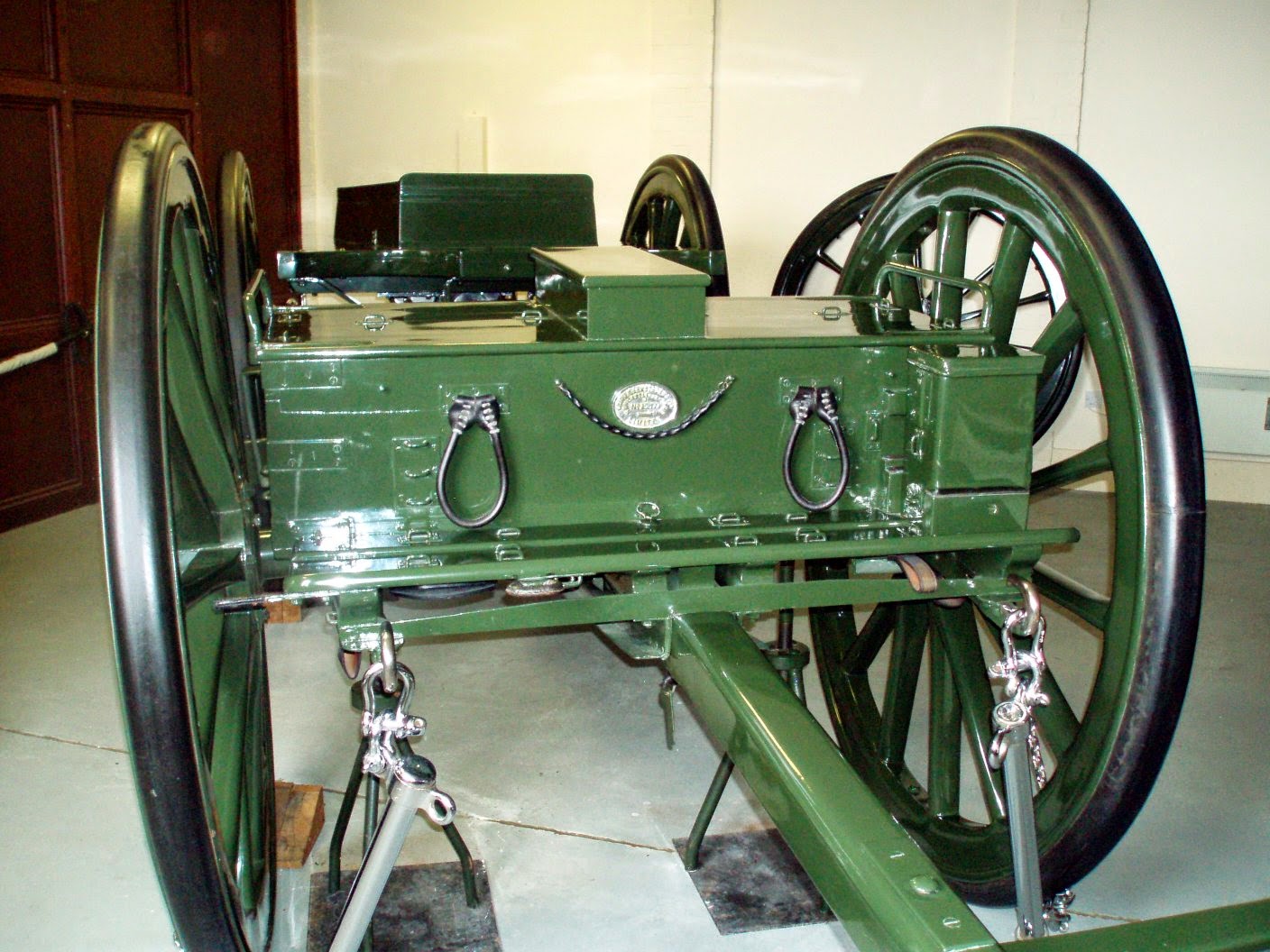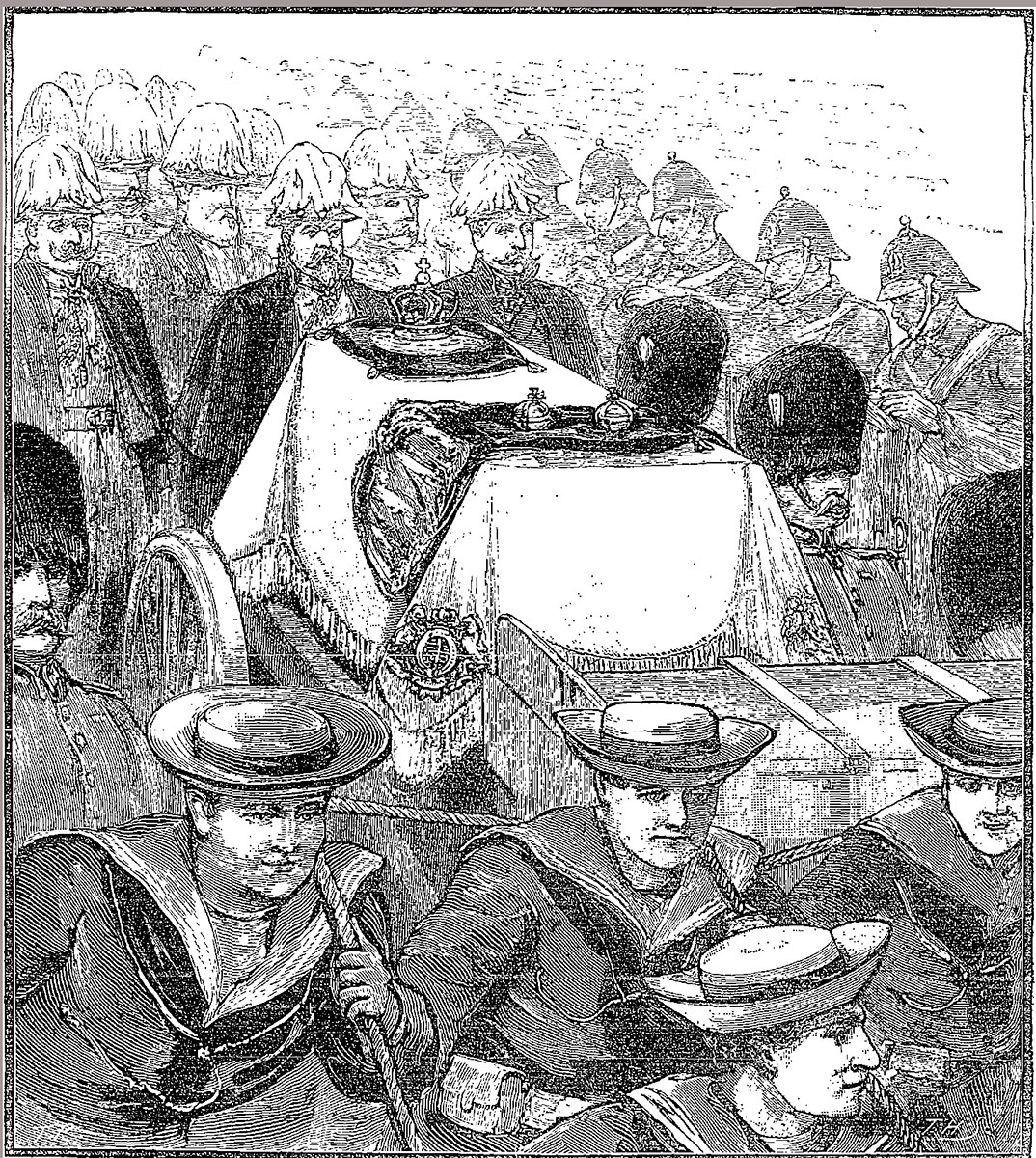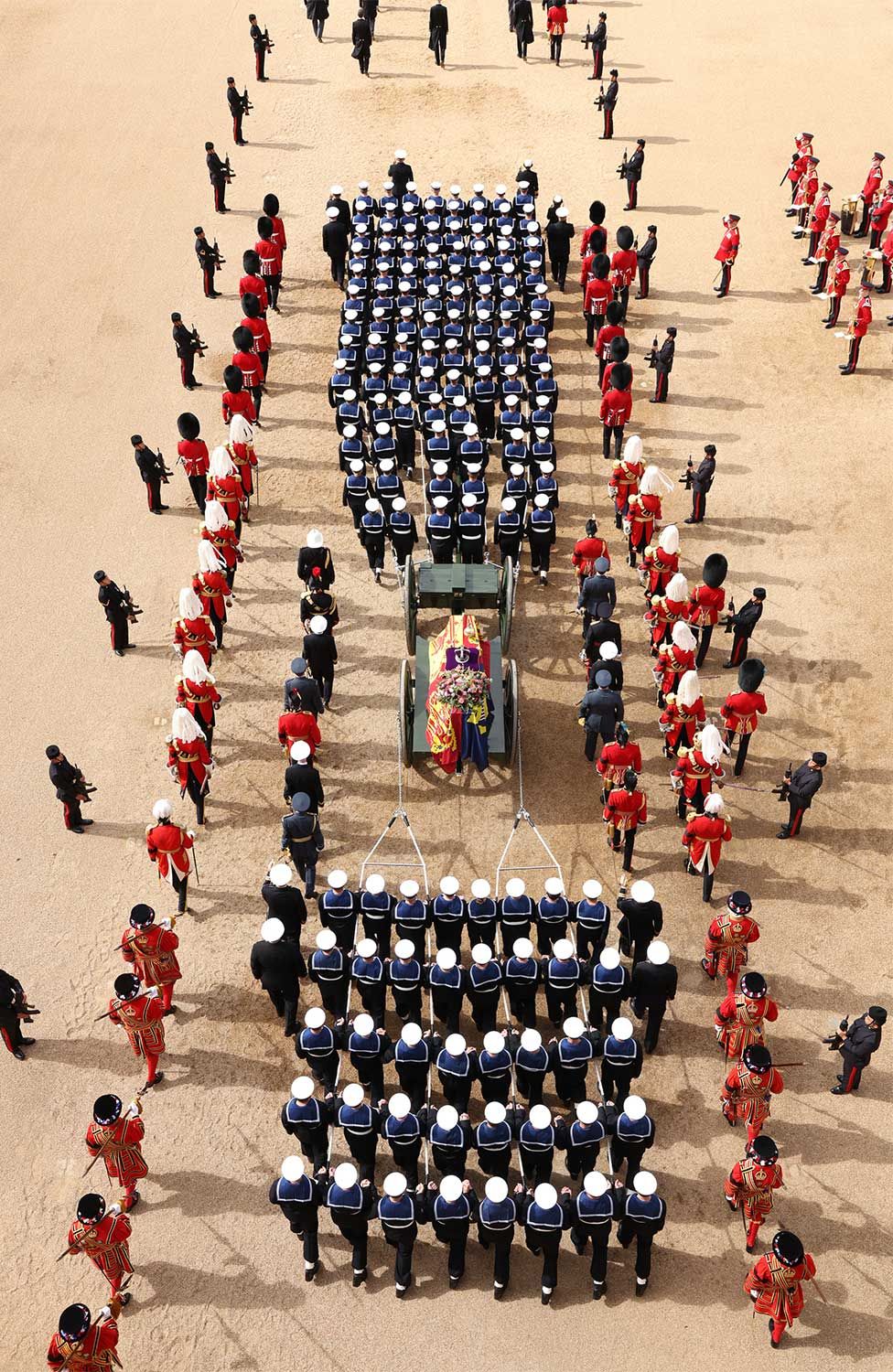 The gun carriage carrying the coffin of Queen Elizabeth II at the state funeral procession on Monday 19 September was hauled by Royal Navy sailors, but it was not always the case.
The gun carriage carrying the coffin of Queen Elizabeth II at the state funeral procession on Monday 19 September was hauled by Royal Navy sailors, but it was not always the case.This tradition dates back to Queen Victoria’s funeral on 2 February 1901, with the Great Western Railway supplying the ropes for the sailors to rig to the gun carriage on the occasion. This drawing of the bluejackets hauling the Queen’s coffin that day was published in the Penny Illustrated Paper on 9 February 1901, with the ropes clearly visible.
On 2 February 1901 the weather was extremely cold and the hawsers for the gun carriage to be used for the procession from Windsor railway station to the Castle had frozen. The horses intended to pull the gun carriage were also affected by the intense cold and had become restive and possibly dangerous during the wait for the delayed funeral train to arrive. It was at this point that the GWR played its essential part in what has become a tradition for subsequent state funerals.
 The Duke of Portland, who was Master of the Horse at Queen Victoria’s funeral, recalled what happened in a letter published in The Times on 28 January 1936 at the time of King George V’s funeral:
The Duke of Portland, who was Master of the Horse at Queen Victoria’s funeral, recalled what happened in a letter published in The Times on 28 January 1936 at the time of King George V’s funeral:“Owing to the lateness of the train which conveyed Her Majesty’s coffin from Paddington to Windsor the horses attached to the gun-carriage had become cold. When the word of command ‘Walk …March’ was given, the leaders twice reared up, and then fell back on the other horses, which caused all six to fall down.
“My recollection is that Admiral Sir Michael Culme-Seymour was in command of the large Naval Guard of Honour drawn up on the spot. As soon as Sir Michael saw what had occurred he called out to me in his usual resonant voice, ‘All right, my boys will soon straighten out this mess.’ He at once ordered them to go into the station and the station master procured ropes (from the communication cords of carriages). Sir  Michael then ordered them to fall in and draw the gun-carriage from the station to the entrance to the Castle grounds at the end of the Long Walk and up the slope. It was a most touching and effective procession and, in my opinion, much more impressive than would have been the official procedure.”
Michael then ordered them to fall in and draw the gun-carriage from the station to the entrance to the Castle grounds at the end of the Long Walk and up the slope. It was a most touching and effective procession and, in my opinion, much more impressive than would have been the official procedure.”
 Michael then ordered them to fall in and draw the gun-carriage from the station to the entrance to the Castle grounds at the end of the Long Walk and up the slope. It was a most touching and effective procession and, in my opinion, much more impressive than would have been the official procedure.”
Michael then ordered them to fall in and draw the gun-carriage from the station to the entrance to the Castle grounds at the end of the Long Walk and up the slope. It was a most touching and effective procession and, in my opinion, much more impressive than would have been the official procedure.”Thus with inspired improvisation and the help of the Great Western Railway, began the tradition which the Royal Navy has claimed ever since of hauling the coffin at funerals of the monarch.
The ropes on the carriages were the external communication cords to alert the guard in an emergency. The brake 3rd carriage No 416, built in 1891, still carries this system, so remember to take a look at it next time you visit Didcot Railway Centre.
The gun carriage is from a British Army Ordnance, BL, 12 pounder 6 hundredweight MK II, gun and weighs 2.5 tonnes (2.8 tons).
 The carriage was made byVickers, Sons and Maxim in 1896 and entered storage at the Royal Arsenal, Woolwich, being recorded as No. 146. The carriage never saw active service, probably being retained as part of a reserve. Queen Victoria had seen a gun carriage used during the funeral of her son Prince Leopold, Duke of Albany and requested the same for her funeral.
The carriage was made byVickers, Sons and Maxim in 1896 and entered storage at the Royal Arsenal, Woolwich, being recorded as No. 146. The carriage never saw active service, probably being retained as part of a reserve. Queen Victoria had seen a gun carriage used during the funeral of her son Prince Leopold, Duke of Albany and requested the same for her funeral.In 1899 No. 146 was handed to the Royal Carriage Department for conversion for use in state funerals. A catafalque or raised box or similar platform, that is used to support the coffin, and rubber tyres were added but other fittings and fixtures were left unchanged.
When not in use at state funerals, the carriage is kept in a climate-controlled room at HMS Excellent, a training facility on Whale Island in Portsmouth Harbour.
The carriage was pulled by a 98 members of the Sovereign Guard and followed by 40 additional Guards who acted as brake.
